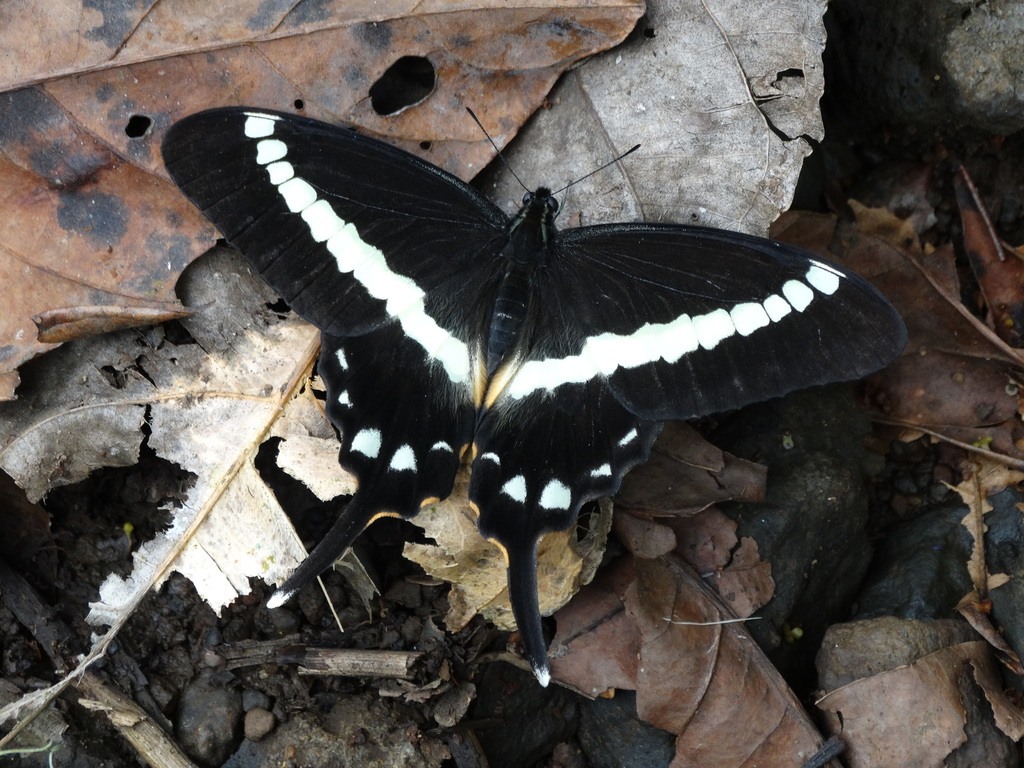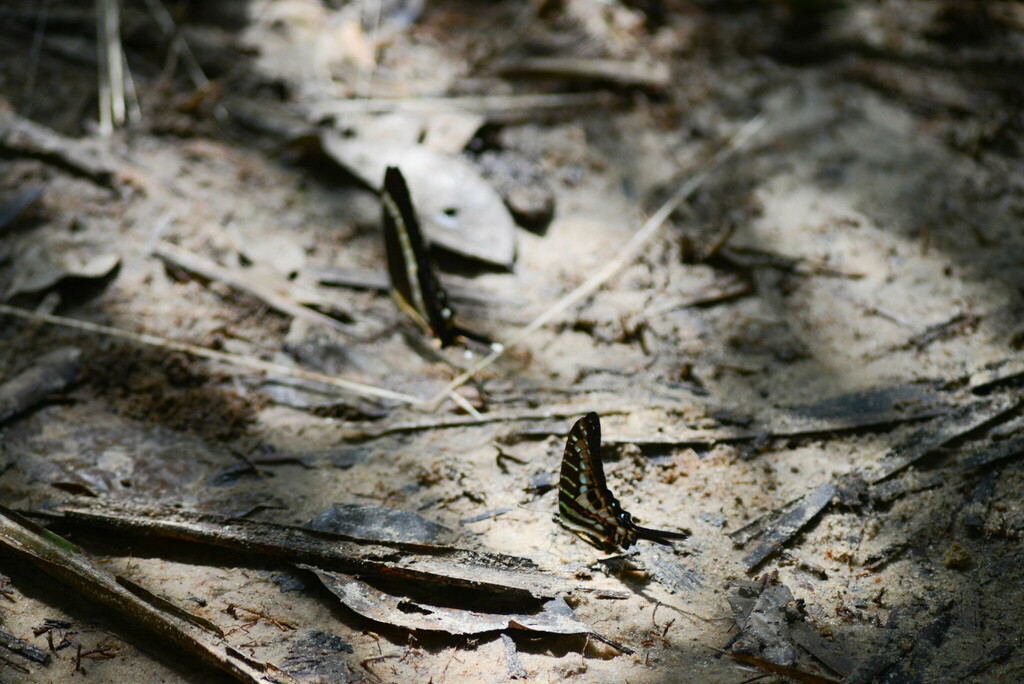This week's butterfly does not seem to be endangered, but it's obscure. Graphium illyris is found intropical Africa, where it has to compete for attention with many larger animals--even larger butterflies.
It is not, however, a very small butterfly. This individual's faded, semitransparent wings spanned more than 8cm.
To see the rest of the photo essay (trigger warning: the elderly butterfly was so unconcerned about the researcher touching its wing because it was dying, and in some photos it's shown dead):
Its English name is Cream-banded Swordtail. Science sites give little information about it. This early published description uses a lot of French words to tell us what the photo above tells us, plus a description of the cream-to-yellow and dull red-to-orange spots on the underside of the hind wings:
Countries where it's found include Benin, Cameroon, Congo, Gabon, Ghana, Ivory Coast, Liberia, Nigeria, Sierra Leone, Togo, and Zaire.
There are subspecies. The list of subspecies names has changed over time. The distinctions among subspecies are subtle; sites like Inaturalist don't even bother.
The subspecies name flavisparvus literally means "the little yellow kind," or at least "yellow-small," and its Cream Bands can show a good deal of butter in the cream. It's considered rare, while the other subspecies are merely uncommon. This drawing used on postage shows a very yellow band:
To buy this stamp and others in the same series: https://solbery.com/catalog/stamps?country=Liberia&series=Butterflies+%281996+-+2nd+series%29&nominal=25+c&sort=oldest
Other subspecies listed recently are girardaui and hamatus as well as, of course, illyris. In the newest material girardaui and hamatus are lumped together as girardaui. Subspecies names addenda and stictica have been out of use for many years.
Photo by Deboas, taken in Liberia in February. This Cream-Banded Swordtail is drinking with a buddy of a different species, smaller and stripier.
As in many Swallowtail species, both sexes are primarily pollinators, but the reproductive cycle requires males to do some composting. Males have to ingest mineral salts in order to become able to mate. Females absorb minerals from contact with males, and can afford to flit around sipping nectar and choosing leaves for their larvae to eat, while males sip from polluted puddles. Researchers note that male illyris are attracted to dead fish, as well as sweaty shirts.
Some females look more brown-and-cream rather than black-and-white. How consistently this rule allows the sexes to be distinguished is unknown. Both sexes usually stay in rain forests where they're not often seen by humans. Males are more likely to look for polluted puddles on forest roads.
Which flowers they prefer, or what the caterpillars eat, is not known. Apparently nobody has confirmed even what the early stages of this butterfly look like.




No comments:
Post a Comment